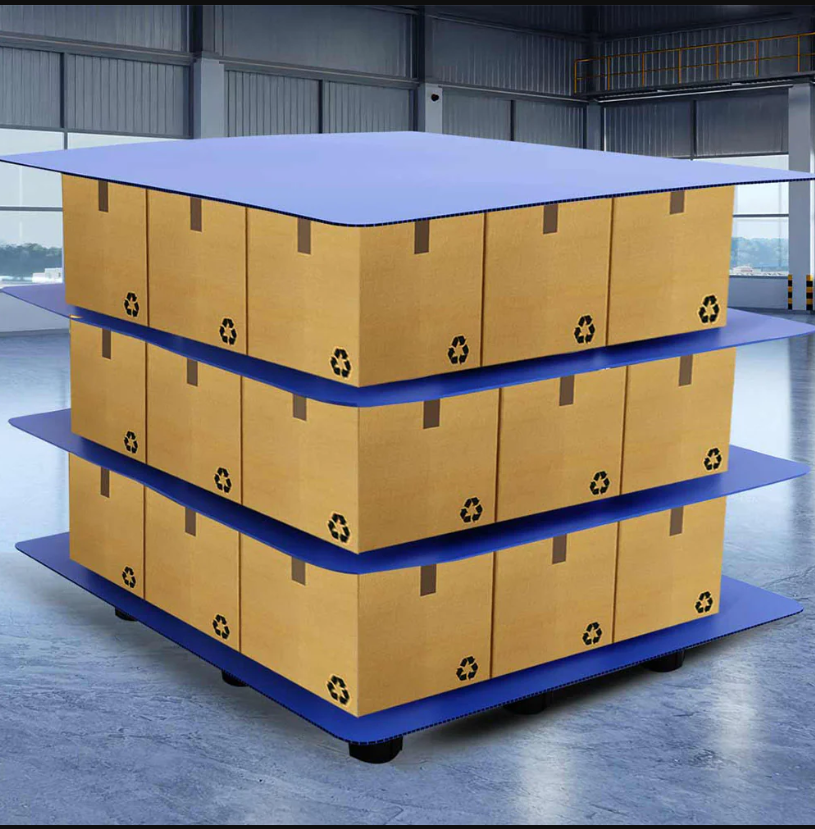In a world that demands both efficiency and sustainability, packaging and logistics are no longer just back-end concerns—they’re front-line priorities. Among the innovative solutions reshaping industrial and commercial operations is the foldable container. Far from a simple box that collapses, this product represents a new class of functional design thinking, impacting not just how we ship goods, but how we manage space, reduce waste, and adapt to dynamic supply chains.
Understanding the Foldable Container
A foldable container, at its core, is a reusable, collapsible packaging unit designed for transporting, storing, and protecting goods. Its structure is engineered to be sturdy while in use and compact when not needed. Unlike traditional cardboard boxes or wooden crates, these containers are often made from advanced plastic composites or polypropylene boards, which offer durability, moisture resistance, and long life cycles.
The magic of the foldable container lies in its dual ability: it can be rigid and protective when expanded and lightweight and compact when collapsed. This dual nature makes it exceptionally valuable across industries ranging from automotive to pharmaceuticals, electronics to agriculture.
The Engineering Behind Foldable Containers
Modern foldable containers aren't haphazardly designed. They involve detailed material science and industrial design. Many utilize honeycomb or bubble-structured cores sandwiched between flat panels, providing superior rigidity without the weight. This configuration allows the container to withstand stacking loads, resist impact, and offer thermal and water resistance.
Depending on the use case, these containers may include:
- Reinforced edges
- Locking mechanisms for assembly
- Ergonomic handles for manual handling
- Internal partitions for sensitive goods
- QR code panels for tracking and inventory
This blend of customizability and robustness makes foldable containers particularly advantageous in returnable packaging systems, where the same container is used multiple times across the supply chain.
Benefits of Foldable Containers
The growing adoption of foldable containers is driven by both economic and environmental benefits. Here are some of the most compelling:
1. Space Optimization
When empty, a foldable container can be collapsed to a fraction of its original size. This dramatically reduces the volume during return logistics, storage, or redistribution. For warehouses and distribution centers where space is at a premium, this translates into tangible cost savings.
2. Cost Efficiency
Though the initial investment is higher compared to disposable packaging, the reuse potential of foldable containers makes them more economical in the long run. Businesses save on packaging materials, transportation costs (due to lower return volumes), and disposal fees.
3. Durability
Constructed from engineered plastic or reinforced materials, foldable containers are built to endure rough handling, moisture, and temperature fluctuations. Their longevity can often outlast 70+ cycles of usage, making them ideal for industrial operations with high-frequency supply chains.
4. Eco-Friendly Packaging
Foldable containers support sustainability goals by reducing single-use packaging waste. Many are 100% recyclable and help minimize the carbon footprint associated with packaging production and disposal.
5. Customization
From dimensions to interior fittings, branding to ergonomic design—foldable containers are highly customizable. This flexibility enables better protection for specific items and enhances warehouse organization.
Industry Applications: Who Uses Foldable Containers?
1. Automotive Sector
Auto manufacturers use foldable containers to move parts like bumpers, dashboards, or mechanical components across plants. With internal dividers and padding, they ensure zero damage while optimizing truckloads.
2. Electronics & Appliances
From LED TVs to washing machines, fragile electronics need packaging that combines rigidity with cushioning. Foldable containers with foam inserts or layered compartments help reduce breakage during long-distance shipping.
3. Retail & E-commerce
High-turnover inventory cycles demand smart packaging. Foldable containers allow quick setup for delivery and easy collapse for return trips—perfect for reverse logistics in retail.
4. Agriculture & Food Processing
Hygienic and moisture-resistant foldable containers are used for storing and shipping produce. Their easy-to-clean surfaces and reusability meet food-grade logistics standards.
5. Pharmaceuticals
Sensitive medical supplies benefit from packaging that resists contamination and protects against temperature swings. Custom-built foldable containers are now becoming the norm for bulk pharma logistics.
Foldable vs. Traditional Packaging: The Comparison
FeatureFoldable ContainerTraditional PackagingReusabilityHigh (70+ cycles)Low (single use)DurabilityExcellentModerate to lowCustomizationHighLowEnvironmental ImpactLowHighSpace EfficiencyHigh when collapsedFixed space requirementLong-term CostLowerHigher over timeHandling ConvenienceErgonomic, secureOften manual and unsafe
Clearly, the shift toward foldable packaging isn’t just about reducing clutter—it’s about building smarter systems that save money, protect products, and reduce waste.
Addressing Challenges in Adoption
Despite its advantages, foldable packaging is not without its challenges. The upfront cost, though offset over time, may be a hurdle for smaller businesses. Additionally, the management of return logistics requires coordination—tracking containers, cleaning and reusing them, and ensuring they return intact.
However, with increasing digitization in logistics and better supply chain visibility tools, these challenges are quickly becoming manageable. RFID tagging, QR codes, and smart inventory systems make returnable and foldable systems more viable than ever.
The Role of Design Innovation
As global shipping needs evolve, so does the demand for more intelligent packaging. Future foldable containers may incorporate:
- Smart sensors for tracking temperature and humidity
- Self-locking mechanisms for faster assembly
- Biodegradable or recycled materials
- Modular stacking systems for better vertical integration
The potential for innovation in this space is vast, especially with businesses prioritizing ESG (Environmental, Social, and Governance) metrics and circular economy models.
Final Thoughts
The foldable container represents more than a trend—it’s a shift in mindset. One that balances performance with responsibility, and cost savings with sustainability. As industries rethink logistics for the 21st century, foldable packaging solutions are no longer optional; they are essential.
Whether you're a logistics planner, sustainability officer, or operations manager, it's worth exploring how this innovative packaging option can bring long-term value to your organization. Foldable containers are not just packaging—they're a platform for progress.





Comments